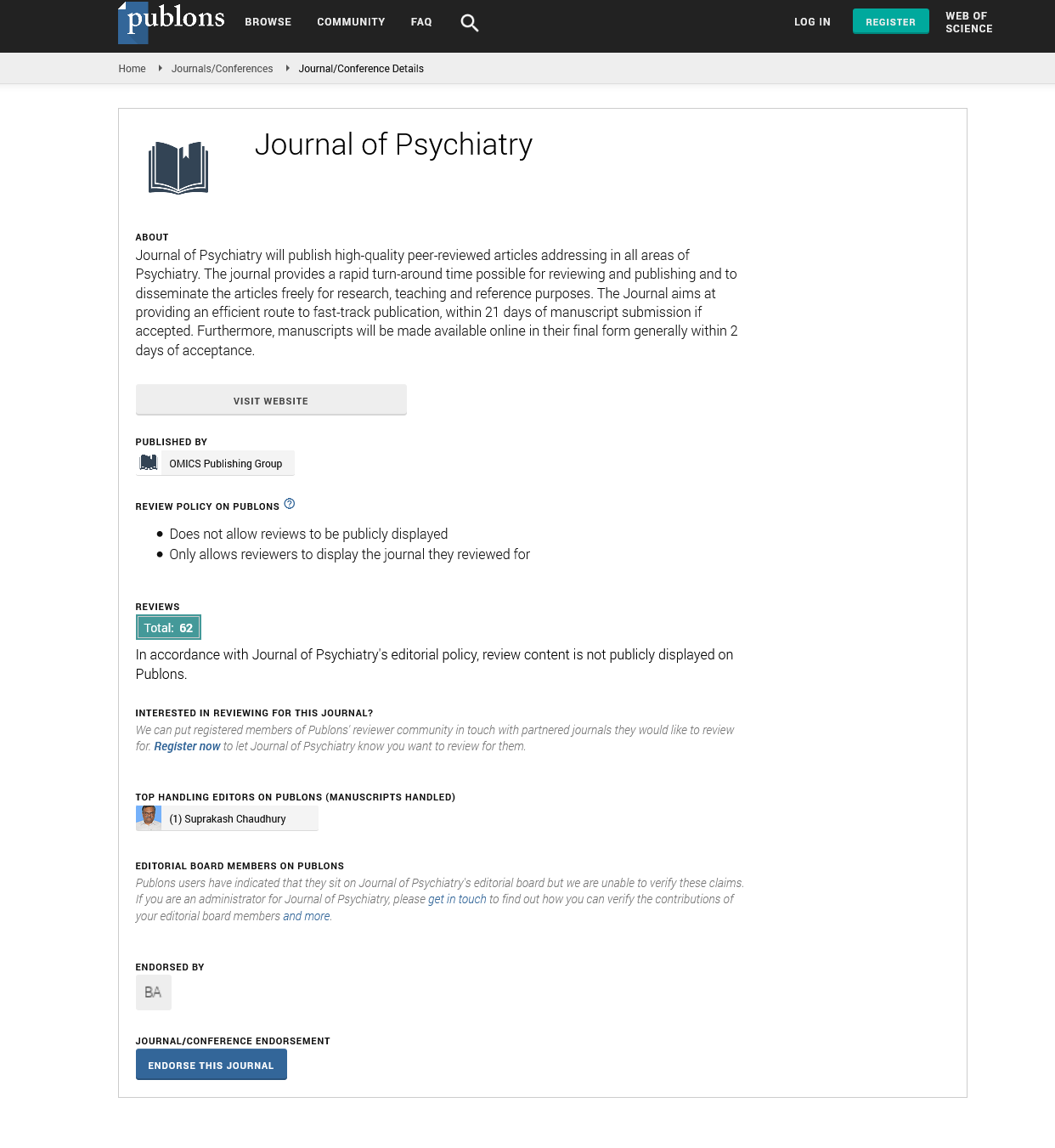Indexed In
- RefSeek
- Hamdard University
- EBSCO A-Z
- OCLC- WorldCat
- SWB online catalog
- Publons
- International committee of medical journals editors (ICMJE)
- Geneva Foundation for Medical Education and Research
Useful Links
Share This Page
Open Access Journals
- Agri and Aquaculture
- Biochemistry
- Bioinformatics & Systems Biology
- Business & Management
- Chemistry
- Clinical Sciences
- Engineering
- Food & Nutrition
- General Science
- Genetics & Molecular Biology
- Immunology & Microbiology
- Medical Sciences
- Neuroscience & Psychology
- Nursing & Health Care
- Pharmaceutical Sciences
Power spectral differences in relation to presented psychopathology in Schizophrenia
Euro Global Summit and Medicare Expo on Psychiatry
July 20-22, 2015 Barcelona, Spain
Nensi Manusheva
Posters-Accepted Abstracts: J Psychiatry
Abstract:
Since its beginning, electroencephalography (EEG) was supposed to give explanation for the symptoms in psychiatric disorders. But this diagnostic procedure is rarely used in routine psychiatric settings mainly to rule out some organic changes that could be of interest for the diagnosis. In the last decades the digital acquisition of EEG and the possibility for quantitative analysis of the signals gave us opportunity for precise measurement of frequencies, amplitudes and localization and comparation between groups of interest. Until present day?s variety of investigations were done focusing on quantitative electroencephalography (QEEG) parameters in order to obtain neurophysiologic explanation for the disturbed behavior and thinking in Schizophrenia. Although much work is done there is still no enough evidence for recognizable patterns of disturbed background activity of the EEG in Schizophrenia patients. So, the aim of this presentation is to present actual knowledge and our own results of the differences in QEEG power spectrum in patients with Schizophrenia according to presented symptomatology. ?here are evidences that patients with Schizophrenia ?re disorganized in the power spectrum of basic EEG activity when compared to healthy control subjects and that there are correlations of the spectral QEEG activity and the clinical scale scores. Differences in QEEG parameters are supposed to be result of the disordered homeostatic regulation of the power spectrum. In the future standardization of the methodology would allow wider application in the field of clinical psychiatry.

